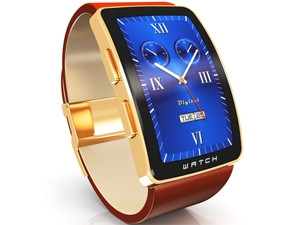
Wearables have made it mainstream and are now appearing on wish lists for the first time, thanks to all the hype created by limited-edition, over-priced offerings set to launch soon.
Several manufacturers are already taking advantage of the increase in spending that typically characterises the festive season, with companies like Fitbit, Jawbone and Microsoft launching new devices.
Much of the consumer attraction, growing just in time for the holidays, has come from the likes of Apple, which launched its much anticipated Watch in early September; a device the company claims is its most personal yet. While it will not hit shelves for some time - with predictions of a 2015 launch - it has already created quite a stir.
The latest buzz is that it will also come out in gold - at a price equivalent to 10 iPads - some $4 000 to $5 000. Although this is sheer madness, says Swift Consulting CEO and tech blogger Liron Segev, such hype does propel wearable devices into the mainstream.
New ground
Segev says this sort of buzz has moved wearables onto holiday wish lists for the first time. He notes several manufacturers, like Jawbone, have launched products just in time for what is typically the retail sector's busiest season. "They all want to cash in on Christmas sales."
More devices will come to the fore before the buying starts, adds Segev, noting wearables are here to stay. "It might not be your thing, but there's no getting away from it." He anticipates the devices moving beyond bands to other smart items, like jewellery that tracks steps and heart beats.
Segev notes wearables have become "cool" now, and marked a shift from the territory of the geek to that of the average Joe. He says people are asking for them by name.
Getting on board
Jawbone this week unveiled fitness trackers called "UP Move" and "UP3", which Reuters reports will sell for between $50 and $180.
Microsoft also recently launched its Band device, while Fitbit has unveiled Surge. The Band, says Microsoft, is "the first device powered by Microsoft Health" and tracks heart rate, steps, calorie burn, and sleep quality, while also providing access to e-mail previews and calendar alerts. The Band comes in just shy of $200.
Fitbit's Surge has been described as a "superwatch" with built-in GPS, but retails at $250. This tracker is in addition to its Charge and Charge HR devices, which are more affordable.
These devices join the likes of several others that have been launched over the past while, including devices made by Samsung, Nike and LG, as manufactures go into a frenzy to avoid missing out on the move towards wearables.
Word of caution
However, Arthur Goldstuck, MD of World Wide Worx, says the wearables market is focusing heavily on fitness bands. He notes that while watches cost R4 000 upward, there is not a real market for them. "People understand that they are looking at an expensive device that will be obsolete in three or four years, and that will have lost its novelty in less than a year.
"Traditionally, you bought a watch to last you a decade or two. Fitness bands at under R1 000, however, are a boom waiting to happen."
Earlier this year, IDC said wearable shipment volumes will exceed 19 million units in 2014 - more than tripling last year's sales - before swelling to 111.9 million units in 2018. Ramon Llamas, IDC research manager of mobile phones, said the accessories had succeeded in drawing much-needed interest and attention to a wearables market that has had some difficulty gaining traction.
"The increased buzz has prompted more vendors to announce their intentions to enter this market. Most importantly, end-users have warmed to their simplicity in terms of design and functionality, making their value easy to understand and use."
Share